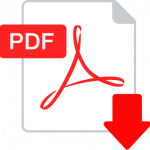50 Ways to Leak Your Data: An Exploration of Apps’ Circumvention of the Android Permissions System (USENIX Sec ’19)
Abstract
Modern smartphone platforms implement permission-based models to protect access to sensitive data and system resources. However, apps can circumvent the permission model and gain access to protected data without user consent by using both covert and side channels. Side channels present in the implementation of the permission system allow apps to access the data without permission; whereas covert channels enable communication between two colluding apps so that one app can share its permission-protected data with another app lacking those permissions. Both pose threats to user privacy.
In this work, we make use of our infrastructure that runs hundreds of thousands of apps in an instrumented environment. This testing environment includes mechanisms to monitor apps’ runtime behaviour and network traffic. We look for evidence of side and covert channels being used in practice by searching for sensitive data being sent over the network for which the sending app did not have permissions to access it. We then reverse engineer the apps and third-party libraries responsible for this behaviour to determine how the unauthorized access occurred. We also use software fingerprinting methods to measure the static prevalence of the technique that we discover among other apps in our corpus.
Using this testing environment and method, we uncovered a number of side and covert channels in active use by hundreds of popular apps to obtain unauthorized access to both unique identifiers as well as geolocation data. We have responsibly disclosed our findings to Google and have received a bug bounty for our work.
Citation
Joel Reardon, Alvaro Feal, Primal Wijesekera, Amit Elazari Bar On, Narseo Vallina-Rodriguez, and Serge Egelman. 50 Ways to Leak Your Data: An Exploration of Apps’ Circumvention of the Android Permissions System. In Proceedings of the 24th USENIX Security Symposium. USENIX Assoc., Berkeley, CA, USA. 2019. Distinguished Paper Award.

